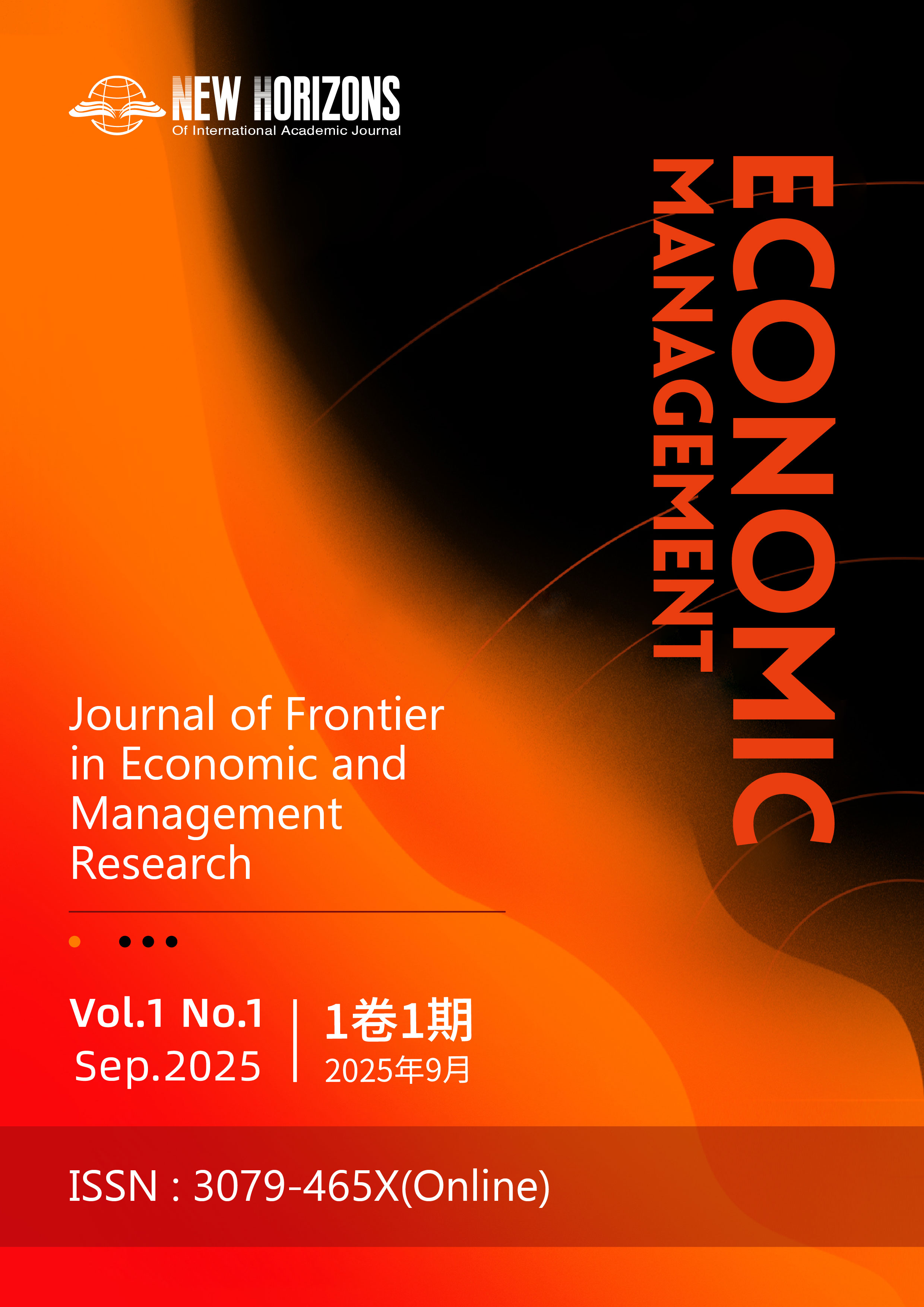Research on the normalized assistance mechanism for rural low-income population under the digital economy——Taking the rural areas of Guangxi as an example
DOI:
https://doi.org/10.63944/mwq.JFEMRKeywords:
digital economy; rural low-income population; assistance mechanismAbstract
The digital economy emerged as the times require in the new round of information technology revolution. It is a new kinetic energy and a new engine to promote high-quality economic development. It also provides a good opportunity for the digital construction of rural agriculture and rural revitalization. Based on the era of digital economy, this paper analyzes the status quo of the normalized assistance mechanism for the rural low-income population in Guangxi, and points out from six aspects: industrial assistance, intelligent assistance, employment assistance, consumption assistance, support of aspirations and intelligence, and multi-subject assistance. At present, the problems existing in the normalized assistance for the rural low-income population in Guangxi, and suggestions for building a normalized assistance mechanism for the rural low-income population are put forward from these six aspects, so as to accelerate the realization of common prosperity for the rural low-income population.
References
[1] Li Zhengang, Gu Guiqin. (2019). Research on Public Service Supply for the Development of Rural Digital Economy in Ethnic Minority Areas. Guangxi Ethnic Studies, (06): 131-138. 288
[2] Gao Qiang, Zeng Hengyuan. (2021). Metrics, Scale Estimation and Thinking Suggestions of China's Rural Low-income Population. Journal of Xinjiang Normal University (Philosophy and Social Sciences Edition), 42(04): 92-102.
[3] Jiang Huichen. (2024). Increasing the Income of Rural Low-Income Population: Difficulties, Challenges and Promotion Countermeasures. Journal of Nanjing Agricultural University (Social Sciences Edition), (1): 84-93.
[4] Gao Qiang, Zeng Hengyuan. Regular Assistance for Rural Low-Income Population and Underdeveloped Areas: Value Implications, Logical Dimensions and Promotion Strategies [J/OL]. Journal of Sichuan Normal University (Social Sciences Edition), 1-9[2025-07-06].
[5] Fan Hesheng, Guo Yang. (2023). Construction of a Comprehensive Assistance Mechanism for Rural Low-Income Population under the Background of Common Prosperity. Journal of Central South University (Social Sciences Edition), 29(01): 144-153.
[6] Gao Yang, Xu Jiayu, Chai Gongjing. (2023). Rural Low-Income Population Assistance for Common Prosperity: Governance Transformation and Path Selection. Journal of Nanjing Agricultural University (Social Sciences Edition), 23(03): 63-72.
[7] Zuo Ting, Zhao Yongli. (2024). Enhancing Labor Skills and Improving Working Conditions: An Analysis of the Income Growth Path for Rural Low-Income Population. Journal of Hohai University (Philosophy and Social Sciences Edition), 26(02): 1-11.
[8] Wang Xiaolin, Jin Ran. (2020). Regular Stratified and Categorized Assistance for Rural Low-Income Population: Institutional Logic and Governance Transformation. Chinese Journal of Population Science, 39(03): 3-18.
[9] Lin Minggang. (2024). Holistic Governance of Regular Assistance for Low-Income Population: An Investigation Based on the Selection of Breakthrough Points for the Connection and Integration of the "Two Policies". Administrative BBS, 31(4): 155-162. The DOI: 10.16637 / j.carol carroll nki. 23-1360 / d. 2024.04.007.
[10] Jia Haigang. (2025). The Action Mechanism and Responsibility System for Promoting Common Prosperity of Farmers and Rural Areas under the Rural Revitalization Strategy: A Multi-Case Study Based on the First Batch of National-level Rural Complex. Journal of Yunnan Minzu University (Philosophy and Social Sciences Edition), 42(02): 83-93.
[11] JWen Tao, Chen Yiming. (2020). The Integrated Development of Digital Economy and Rural and Agricultural Economy: Practical Models, Real Obstacles and Breakthrough Paths. Agricultural Economic Issues, (07): 118-129.
[12] Su Zhiwen, Liu Chuanming. (2025). How does the Digital Economy Promote Farmers' Prosperity and Abundance. Rural Economy, (03): 105-114.
[13] Zhang Yongqi, Zhuang Tianhui. (2024). Digital Economy and Stable Income Growth for Farmers from the Perspective of New Quality Productivity: Empirical Evidence Based on County-level Data in China. Henan Social Sciences, 32(12): 67-80.
[14] Zhang Lili. (2019). Research on Targeted Poverty Alleviation of Rural Low-income Groups. Qingdao University. 289
[15] Xin Chongchong, Zhou Quanlin. (2024). The Logic, Predicaments and Breakthroughs of Digital Economy Empowering the "Agriculture, Rural Areas and Farmers" Work in the New Era. Gansu Social Sciences, (05): 197-205.
[16] Zou Hui. (2021). The Predicaments and Solutions of Rural Digital Economy Development. Agricultural Economics, (02): 46-47.
[17] Liang Dong, Tang Wenfeng, Du Weicheng, Sun Guangrong, Jia Xinwei. (2019). Research and Design of Agricultural and Rural Digital Resource System Architecture. Journal of Agricultural Big Data, 1(03): 28-37.
[18] Mai Zi.(2020) Opening up the imagination of the village digital economy. Agricultural Economics, , No.347(05):60-62.
[19] Zhang Xinhong. Digital Economy: New Variables of China's Transformation and Growth [EB/OL]. (2016-11-24). http://theory.people.com.cn/n1/2016/1124/c40531-28892022.html
[20] Wang Hanjie. (2024). igital Literacy and Farmers' Income: A Discussion on the Formation of Digital Inequality. China Rural Economy, (03): 86-106.
[21] Gan Li, Qin Fang. To prevent new poverty, it is necessary to narrow the digital divide [EB/OL].(2020-05-18). https://baijiahao.baidu.com/sid=1667018760660072202&wfr=spider&for=pc
[22] Feng Chaorui, Xu Hongyu. (2021). Practical Dilemma and Breakthrough Path of Current Digital Village Construction. Journal of Yunnan Normal University (Philosophy and Social Sciences Edition), 53(05): 93-102.
[23] Lu Xiao, Meng Wangxiang. How the digital economy can solve the dilemma of "retaliatory consumption vs preventive savings" [EB/OL]. (2020-04-27). https://m.hexun.com/news/2020 -04-27/201173062.html
[24] Wang Min. (2018). A brief analysis of the significance of strengthening scientific and technological innovation in boosting rural revitalization. Shanxi Agricultural Economics, (14): 20.
[25] People's Information.Multi-pronged approach to improve farmers' digital literacy [EB/OL]. (2020-05-13). https://baijiahao.baidu.com/sid=1699578290686968040&wfr=spider&for=pc
[26] Lv Pusheng. (2020). Digital Village and Information Empowerment. Social Sciences in Chinese Universities, (2): 13.
[27] Stop left, Li Ying, Li Shixiong. (2023). Analysis of the Identification of Low Income Population in Rural Areas. China Rural Economy, (09): 2-20.
[28] Yu Peng, Guan Xinhua. (2019). The Realistic Logic of Rural Revitalization Strategy. Western Journal, (10):3.
[29] Dazhong.com. Promote the construction of digital countryside and help rural revitalization "overtaking on curves" [EB/OL]. (2021-03-11). 290 https://baijiahao.baidu.com/s?id=1693938086478183780&wfr=spider&for=pc
[30] Legal scene. Establishing a "one database, one network, one platform" intelligent assistance system for low-income population Zhejiang high-speed to promote the digital reform of social assistance [EB/OL]. (2021-09-14). https://baijiahao.baidu.com/s?id=1710808552313509556&wfr=spider&for=pc
Downloads
Published
Issue
Section
License
Copyright (c) 2025 Journal of Frontier in Economic and Management Research

This work is licensed under a Creative Commons Attribution 4.0 International License.









